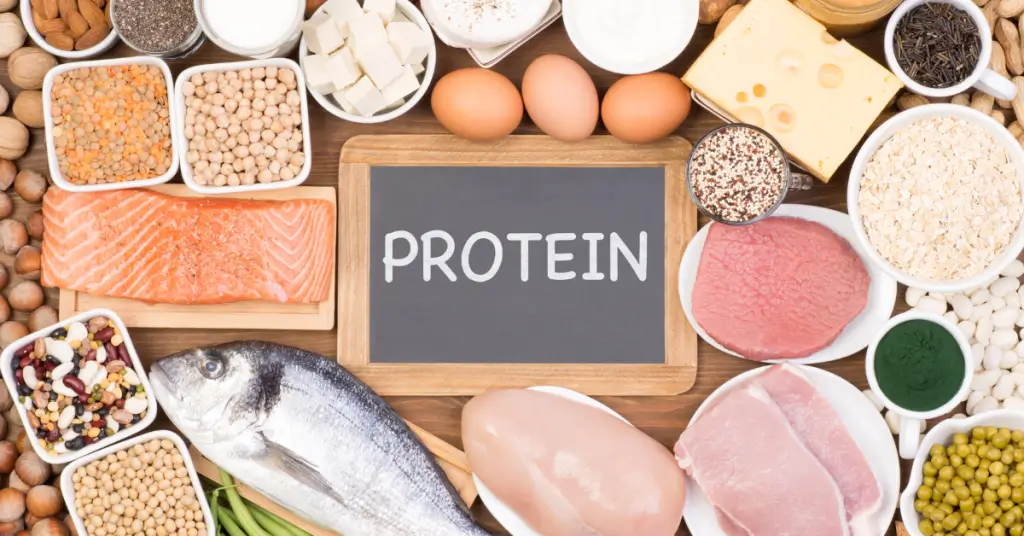Understanding the Power of Protein
This protein nutrition guide is fundamental for providing energy and facilitating cell repair and growth. In the complex world of nutrition, it stands out as a vital macronutrient. Our bodies have the remarkable ability to synthesize some amino acids, the fundamental building blocks of protein. However, we must rely on our diet to acquire certain other essential amino acids. Fortunately, a diverse array of foods offers us access to this critical nutrient.
When it comes to protein sources, you have a broad spectrum of options to choose from. Animal-based options like seafood, lean meats, and eggs provide high-quality protein. On the other hand, plant-based choices such as beans, peas, lentils, nuts, seeds, and soy products offer nutritious alternatives. Incorporating these foods into your diet ensures you obtain the necessary amino acids for optimal health. Whether you prefer a pescatarian, vegetarian, or omnivorous diet, there are plenty of delicious and nutritious choices available to meet your protein needs.
Diverse Protein Sources for Optimal Nutrition
While many Americans meet their protein needs through meat, poultry, and eggs, they often fall short in other important categories like seafood or plant-based sources like nuts, seeds, and soy products. It’s crucial to diversify your protein intake to ensure you receive a broader spectrum of nutrients your body. Examples of these are unsaturated fats, dietary fiber, and vitamin D. By doing so, you can also reduce your intake of sodium and saturated fats. These commonly found in processed meat and poultry products.
Choosing the Right Proteins
When selecting your protein sources, opt for lean cuts of meat and poultry, like 93% lean ground beef, pork loin, or skinless chicken breasts. When it comes to seafood, prioritize options rich in healthy fatty acids, particularly omega-3s. Make sure to avoid those with high methylmercury levels. Excellent choices include salmon, anchovies, and trout.
Determining Your Protein Needs
To determine your daily protein requirement, consider the Recommended Dietary Allowance (RDA), which is typically 0.8 grams of protein per kilogram of body weight, or roughly 0.36 grams per pound. The RDA represents the minimum protein intake necessary to maintain basic nutritional needs and overall health. It’s important to note that this amount is the minimum requirement to prevent deficiency, not an exact daily target. By covering one-quarter to one-third of your plate with protein-rich foods at each meal, you can meet your protein needs effectively.
Timing Matters: Optimize Protein Distribution
For optimal health, it’s advisable to distribute your protein intake evenly throughout the day. Traditionally, people consume the majority of their protein during evening meals, neglecting breakfast. However, recent research suggests that redistributing some protein from dinner to breakfast can aid weight management by reducing hunger and cravings throughout the day.
General guidelines recommend consuming 15–30 grams of protein during each meal. Research indicates that intakes exceeding 40 grams in one sitting don’t provide additional benefits compared to the recommended 15–30 grams per meal.
Meeting your protein needs is essential for maintaining overall health and well-being. By choosing a variety of protein sources and distributing your intake wisely, you can optimize your nutrition and support your body’s vital functions.
Good Sources of Protein
Food Protein Amount (grams)
3 ounces tuna, salmon or trout 21
3 ounces cooked chicken or turkey 19
3 ounces cooked beef or pork 17
6 ounces Greek yogurt 15
½ cup cottage cheese 14
1 cup milk 8
½ cup cooked beans, lentils or edamame 8
¼ cup nuts 7
2 Tablespoons peanut butter 7
3 ounces tofu 7
1 egg 6
For more information, visit www.myplate.gov

